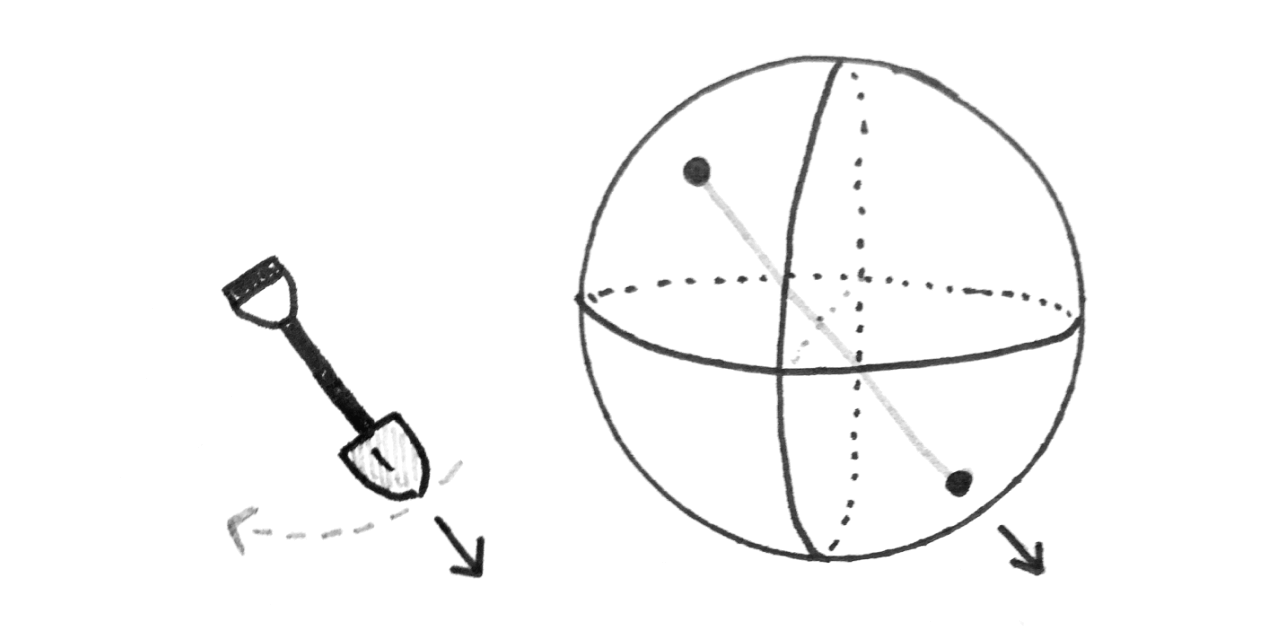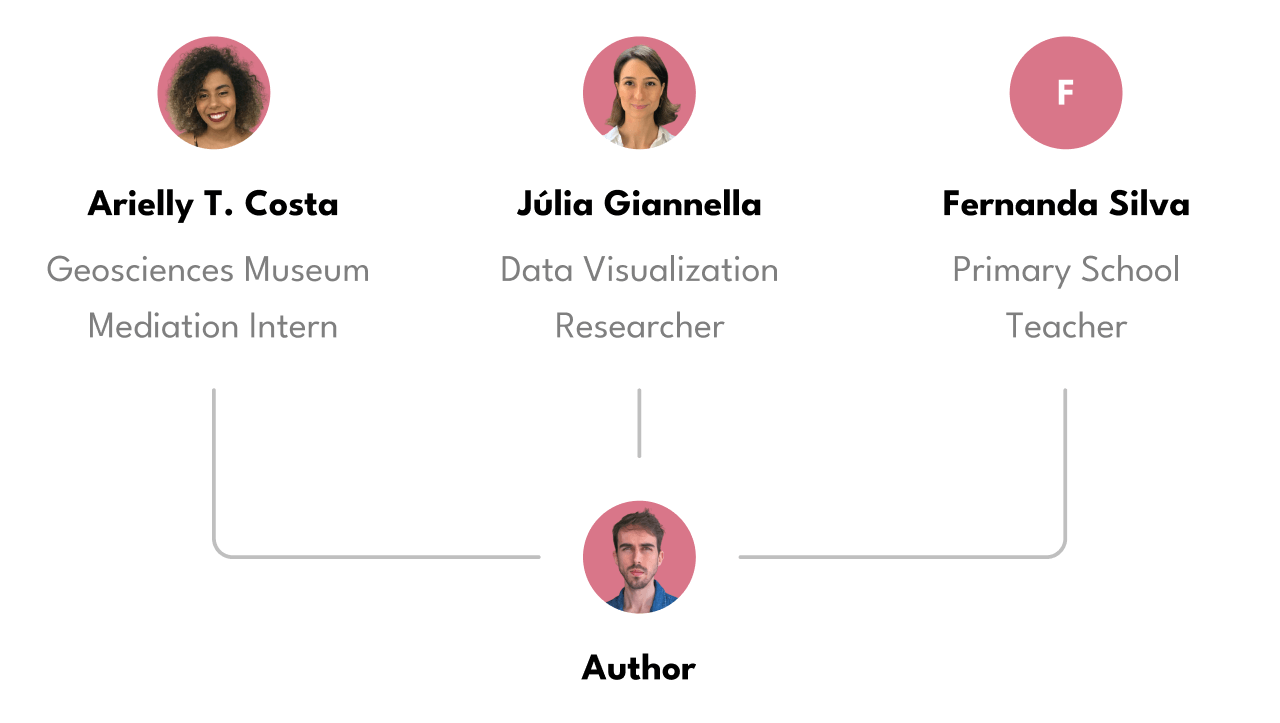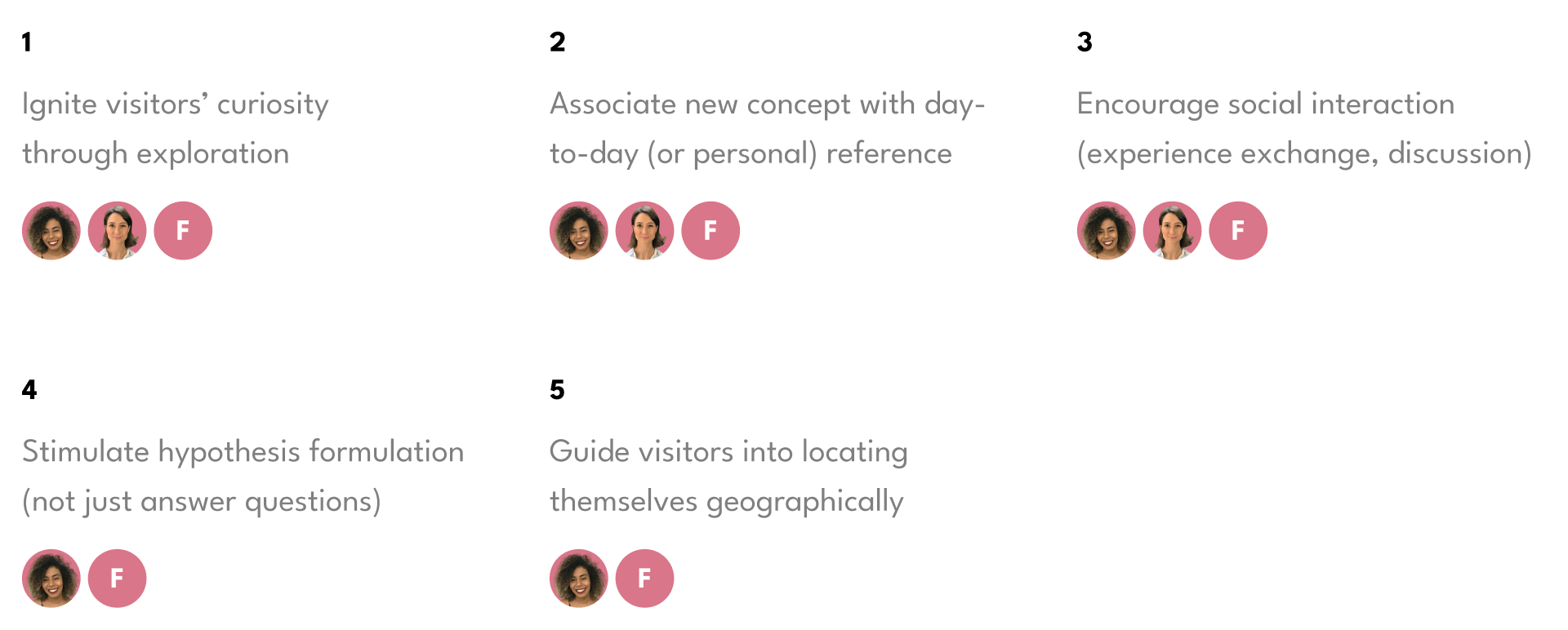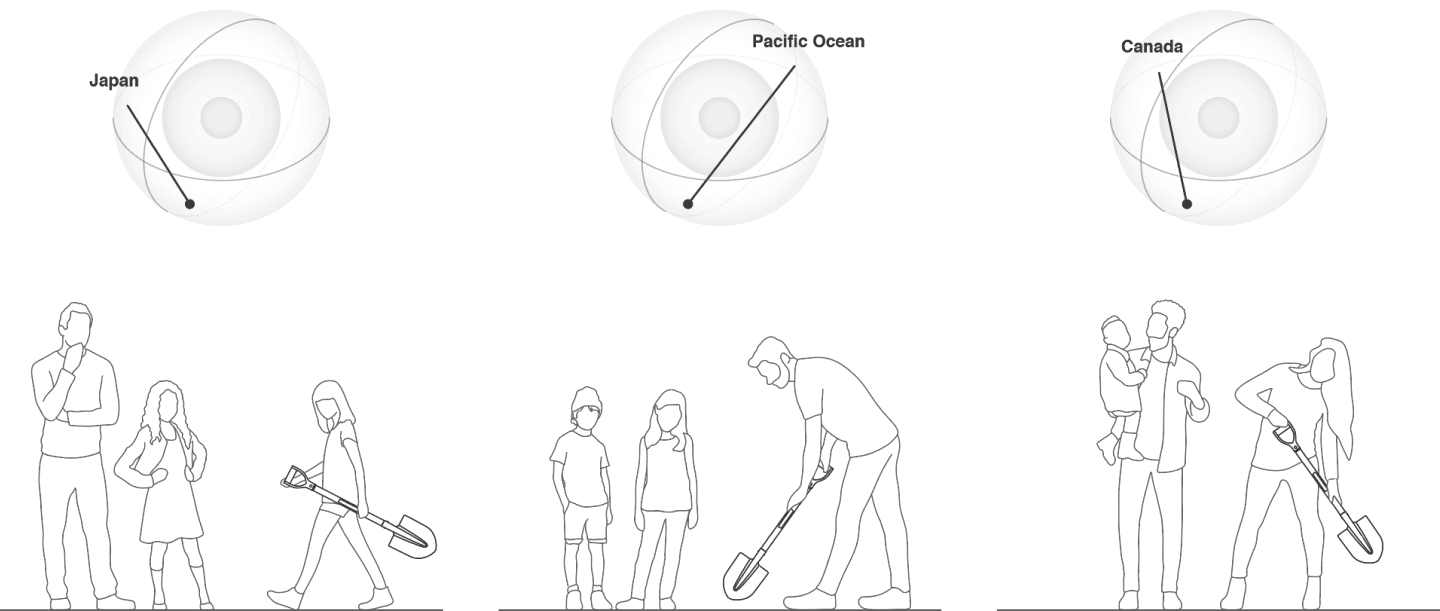For thousands of years, physical objects have been used to represent data – like using pebbles to account for votes in ancient Greece. Such representations, especially newly computer-supported ones, became the focus of an emerging field called data physicalization.
As part of my master’s in interaction design, I explored how data physicalization and tangible and embodied interaction could be combined. More specifically, I studied how an object might convey data not through its shape, but only through our interaction with it.
I proposed a tangible and embodied artifact (a shovel equipped with orientation sensors) that could be used by visitors of Earth sciences museums.
By pointing the shovel to the ground at different angles, visitors could learn where in the world they would end up, if they were to dig a hole towards that direction.

In order to perform such calculation, I created SuperTunnel Simulator – an application that would be running in an electronic device attached to the shovel.
Don’t you have a shovel at hand?
Don’t worry! You can check a standalone version of the simulation at supertunnel.app, which runs on both desktop and mobile devices.



